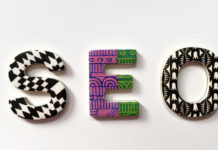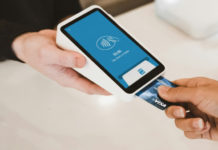Plunge into the extraordinary realm of IoT Application Development services, where the future of technology is created! These services are front-line innovators providing a variety of benefits and technical features.
IoT applications provide a seamless way to connect devices, revolutionizing industries through automation, real-time monitoring, and data-driven insights. Smart homes and healthcare are examples of areas where IoT apps help bring efficiency and productivity and improve the user experience.
Technical awesomeness, such as device connectivity, data management, security protocols, and user-friendly interfaces, are the basic features of IoT app development. The usage of advanced technologies such as AI, ML, and DL ensures reliability, perception, and strong cybersecurity.
Let us unveil the limitless possibilities of IoT app development services, where creativity meets the reimagination of the world in a smarter, connected future!
IoT App Development: An Introduction
Envision a world where your devices can communicate, creating a simple and efficient life pattern. That is the beauty of the IoT (Internet of Things) App Development. In other words, IoT apps enable different devices and sensors to work harmoniously, sharing information without human intervention.
These programs act as brains to smart homes, industries, health care systems, etc. These technologies automate operations, for example, turning off the lights when you exit a room or alerting the doctor about a patient’s condition remotely.
IoT app development comprises coding, designing interfaces, and ensuring that interconnections run properly. It’s a combination of art and science that leads to comfort and innovation for all of us.
Thus, whether you are programming your house from your phone or streamlining the processes in a factory, the Internet of Things creates a world where we are all interconnected.
What Is an IoT Application?
IoT (Internet of Things) Application can be imagined as a conductor of this online orchestra that will let your intelligent devices sing the same tune. As ‘nerves’ of a smart home, factory, or city, these devices connect all the sensors and other gadgets to perform various operations in a coordinated manner.
For example, smart lights, thermostats, and security cameras are installed in your home. An application of IoT can allow connection of these devices, allowing control from your smartphone. You can switch lights off, adjust the temperature, and view surveillance recordings on your phone with just a few taps.
In essence, an IoT application enables the seamless upbringing of birds by providing the necessary automation, convenience, and communication among the system’s devices.
The advantages of IoT development

Now, we will discuss the benefits of IoT App Development in detail.
Automation and Convenience:
Automating and easy to use are the central features of IoT mobile software development. Visualize yourself waking up to a home where the lights regulate themselves, the coffee isn’t brewed and the temperature adjusts it all by itself–you don’t have to move a finger. The IoT apps provide these advantages by automating daily tasks, saving time, and making them convenient. Whether you do it to plan your activities on time or to control your appliances remotely, IoT gives the convenience of a kind that is impossible to match and turns the humdrum into an easy-going task for you to attend to other important things.
Improved Efficiency:
Harvesting significant efficiency is a major benefit of IoT app development. The IoT apps through IoT application can toll devices and systems and bring smooth operation, lessen the existing bottlenecks, and maximize the utilization of resources. This is equivalent to higher productivity levels, shorter downtimes, and lower operational costs for the corporate world. For example, in manufacturing, IoT sensors detect issues before they become a problem, allowing preventive maintenance and avoiding production downtime. After all, IoT supports an organization’s functioning by making it more intelligent with much less effort and resources.
Real-time Monitoring and Control:
Real-time monitoring and control are two major advantages of IoT Application development. With IoT apps, you can have the opportunity to watch the items and systems online while not being in the location. For example, camera security can be checked, smart home devices can be adjusted, or the production process can be monitored from a distance. This power range enables individuals and businesses to feel secure and comfortable with the ability to take action quickly should there be a situation. Applications of IoT may range from home security to industrial optimization, keeping you aware and in control of the problem.
Data Collection and Analysis:
Data gathering and analysis are the movers of IoT App Development. These applications collect the preferred information from linked equipment that can be used to make informed decisions. That implies that businesses learn customer behavior, adapt processes, and anticipate trends for them. IoT apps provide real-time data analysis, consequently allowing the discovery of patterns, inconsistencies, and options for better results. Taking this approach with data provides the foundation for more efficient operations, better strategies, and innovation in products and services. In summary, the IoT enables companies to utilize intelligible data for growth and a competitive edge.
Cost Savings:
Cost savings are the most crucial advantage of IoT app development. Automation, reduction in manual errors, and optimized resource usage are some of how IoT apps provide financial benefits for businesses and individuals. Take, for instance, IoT technologies that lower utility bills and predictive maintenance solutions that result in less investment in repairs. Not only that, but streamlined processes and improved efficiency also lead to unnecessary operation costs. IoT enables organizations to do more with fewer resources and is an economic investment that delivers operational savings over the long haul.
Enhanced User Experience:
A boost in user experience is the most outstanding benefit of the Internet of Things Application Development. Developed by apps so that users can have the best experience ever by the apps, the user-device interaction became rather personalized and seamless. As another example, smart home apps allow users to control their settings with one single touch constantly present, starting from proper lighting to home security. Healthcare industries benefit from IoT apps that can tailor solutions that monitor patients’ health and provide them with the best individualized recommendations. By focusing on user desires and requirements, IoT applications put the quality of experience in the precedence position, thus increasing satisfaction, engagement, and loyalty among users, increasing different domains of user experience.
Scalability and Flexibility:
These programs focus on the students’ needs and associate their growth with technological advancements. Regarding companies, the new trend implies uncomplicated and flexible architecture designed to accommodate new devices, new services, and faster and better scalability. IoT apps can render this architecture that can accommodate any changes, updates, and upgrades as time goes on while remaining relevant and efficient. Be it presenting new functionalities or accommodating more devices, it remains as agile as it comes in great shapes against the ever-changing contexts where it has to stay competitive.
The Challenges of IoT Mobile Application Development and Its Solution.

Security Concerns:
- Challenge: Providing proper protection to IoT devices and data from cyber threats.
- Solution: Implement robust encryption, authentication, and secure communication protocols. Regular security audits and updates should be conducted to reduce response time.
Interoperability:
- Challenge: Creating a communication standard between heterogeneous IoT devices with different protocols.
- Solution: Design standardized protocols utilizing MQTT and CoAP and create middleware to resolve interoperability issues. Compatibility testing is done when developing guarantees interoperability.
Scalability:
- Challenge: Handling an increase in the data throughput and ensuring the app performance as the size of the Internet of Things systems grows.
- Solution: Design apps with scalable architectures, cloud services for data storage and processing, and code optimization for efficiency. Scalability problems are identified and eliminated with the help of load testing.
Data Management:
- Challenge: Handling, monitoring, and securing the IoT-produced large amounts of data.
- Solution: Implement data analytics tools for real-time insights; use data encryption and stick to data privacy rules such as GDPR or CCPA. Data segmentation and filtering techniques cause a reduction in storage and processing overheads.
Power Consumption:
- Challenge: Develop an app to minimize battery discharge on connected devices.
- Solution: Apply energy-efficient algorithms, use power-saving modes, and optimize app performance to decrease the consumption of resources. Continuous monitoring and optimization provide a balance between function and power efficiency.
User Experience:
- Challenge: Production of user-friendly interfaces for sophisticated Internet of Things systems.
- Solution: Perform user research to determine user needs and behaviors. Simplicity, usability, and accessibility in app design are the focal points. Routine usability testing and feedback loops keep improving the user experience.
Device Diversity:
- Challenge: IoT platform, marketplace compatibility, and functionality must be ensured across multiple IoT devices and platforms.
- Solution: Adhere to responsive design guidelines, implement adaptive layouts, and perform device-wise testing. API compatibility management and version management solutions guarantee stable functioning on various devices.
Regulatory Compliance:
- Challenge: Complying with data protection laws and regulatory standards.
- Solution: Comply with regulations, use data encryption, anonymization, and access controls. Audits and compliance checks, which are done regularly, guarantee the observance of legal and ethical standards.
What is the role of IoT App Development in shaping the future?

Smart Homes and Cities:
IoT apps are leading houses and cities to be connected as networks. Digital home applications enable users to control appliances, evaluate energy consumption, and improve security when they are away. Through IoT apps, smart cities manage traffic flow, enhance waste management, and improve citizen services, which results in higher efficiency and sustainability.
Healthcare Innovation:
IoT apps in healthcare promote remote patient monitoring, personalized treatment plans, and predictive diagnostics. Wearable devices linked to apps can monitor health data in real time, allowing for earlier intervention and better patient outcomes. Telemedicine e-apps fill in the gap between patients and healthcare providers. Therefore, health care is more available and effective.
Industrial Revolution:
IoT drives the fourth industrial revolution (Industry 4.0) by connecting machines, sensors, and production systems. Industrial IoT apps track machinery performance, perform predictive maintenance, and enhance production processes. This results in greater levels of productivity, lower downtimes, and reduced expenses for businesses across different sectors.
Smart Agriculture:
The IoT apps transform farming with real-time information on soil conditions, weather patterns, and crop health. Farmers use the IoT apps for irrigation automation, monitoring livestock, and improving crop yields. Thus, this sustainable farming strategy doubles efficiency, eliminates wastage of resources, and ensures food security.
Connected Transportation:
IoT apps revolutionize transport through connected vehicles, smart logistics, and real-time monitoring systems. Smart transportation apps give traffic information and route planners and enhance vehicle safety. Autonomous cars based on the Internet of Things technology will disrupt how we travel by reducing risks, improving efficiency, and reducing the carbon footprint.
Environmental Sustainability:
Through IoT applications, environmental monitoring and environmental sustainability are becoming more important. Sensors hooked up to apps show the air quality, the water usage, and how the waste is managed. It enables an early response to environmental problems, supports the conservation of natural resources, and minimizes the influence of climate change.
Conclusion
IoT app development creates numerous advantages and interests from a technological perspective for the digital living area. IoT apps enable many things, such as automation and effectiveness, quick monitoring, and data analytics, thus improving our lives. By applying software development solutions specifically developed for IoT, companies can smooth their processes, save money, and increase user experience simultaneously. The development of sophisticated technologies such as cloud computing, data analytics, and cyber protection provides for the creation of more robust and scalable IoT solutions. Towards the direction of a connected world, IoT has become an innovation to lead, sustainability to support, and opportunity to explore. By conducting ourselves under these advantages and the tech aspects, we are turning our whole world into a smart, connected, and efficient universe of the Internet of Things.




































